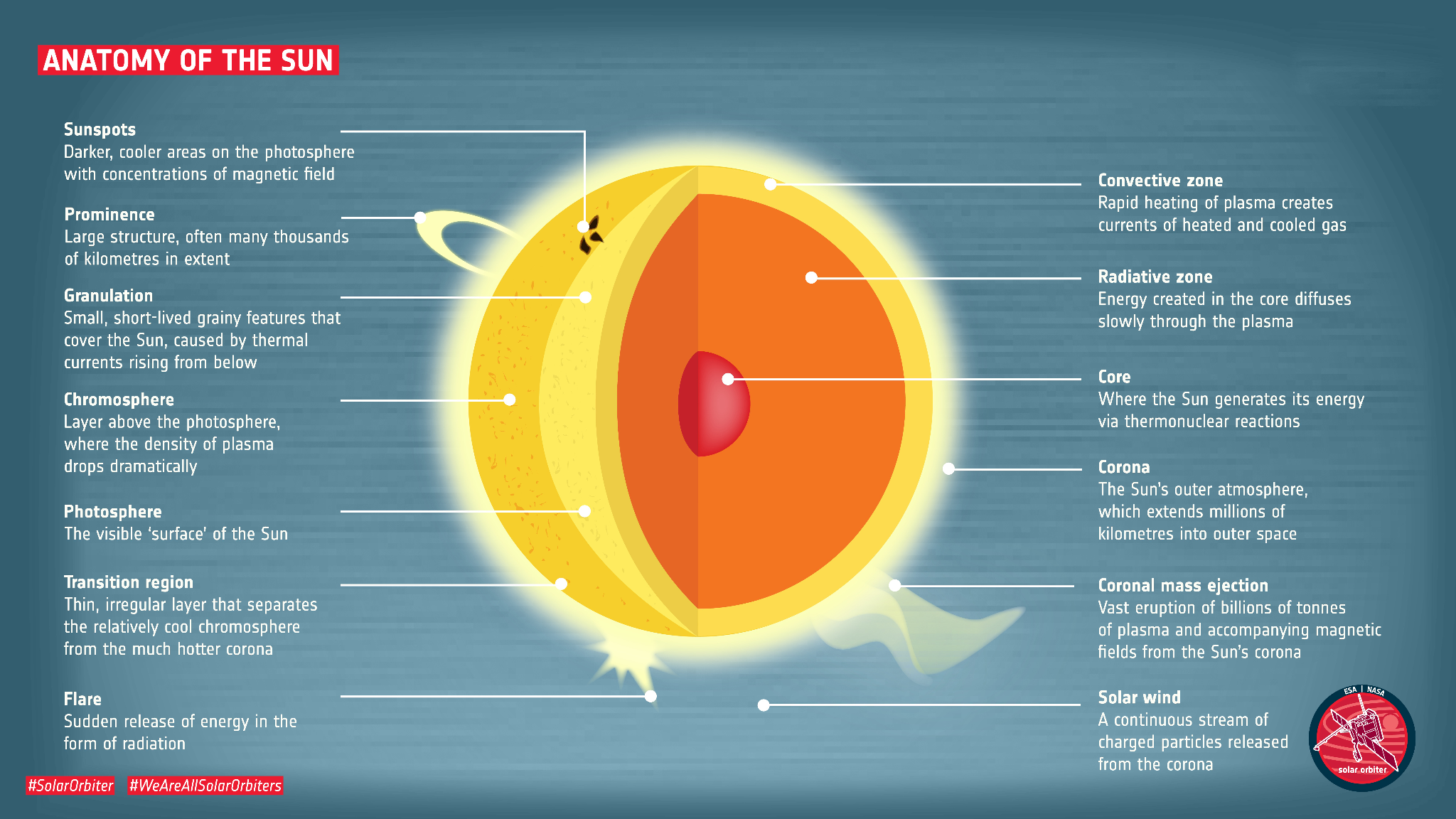Important Facts For Prelims
Picoflare Jets
- 14 Sep 2023
- 4 min read
Why in News?
The Solar Orbiter has recently captured extreme ultraviolet images of the Sun, revealing a multitude of small-scale jets known as "picoflare" jets within a coronal hole, raising questions about their role in powering the solar wind and impacting space weather.
What is Solar Orbiter?
- The Solar Orbiter is a collaborative mission between the European Space Agency (ESA) and NASA that aims to investigate the Sun's magnetic fields, energetic particles, and plasma in their pristine state before they are altered during their journey.
- The mission was launched in February 2020.
What are Picoflare Jets?
- Picoflare jets are small-scale phenomena on the sun that release a significant amount of energy in a short period, typically lasting only a few dozen seconds.
- These jets, named as pico, as they carried approximately one-trillionth as much energy as the largest flares that the sun is believed to be able to produce.
- ‘Pico’ is an order of magnitude that denotes 1012, or one trillionth of a unit.
- These jets, named as pico, as they carried approximately one-trillionth as much energy as the largest flares that the sun is believed to be able to produce.
- The phenomenon responsible for creating these jets in the sun's coronal holes is likely magnetic reconnection.
- Magnetic reconnection involves the breaking and reconnecting of magnetic field lines, which releases a substantial amount of stored energy.
What are Solar Winds?
- The solar wind is created by the outward expansion of plasma (a collection of charged particles) from the Sun's corona (outermost atmosphere).
- This plasma is continually heated to the point that the Sun's gravity cannot hold it down. It then travels along the Sun's magnetic field lines that extend radially outward.
- As the Sun rotates (once every 27 days), it winds up its magnetic field lines above its polar regions into a large rotating spiral, creating a constant stream of "wind."
- These winds, known as "streamers," originate from areas on the Sun's surface called "coronal holes," which are bright patches in the corona.
- As the solar wind moves away from the Sun, it forms a vast region around it called the "heliosphere." This bubble extends well beyond the orbits of most planets in our solar system.
Note: When the solar wind reaches Earth, it is deflected by our planet's magnetic field, causing most of its energetic particles to flow around and past us. This protective region where the solar wind is blocked is called the "magnetosphere."
UPSC Civil Services Examination, Previous Year Question (PYQ)
Q. If a major solar storm (solar flare) reaches the Earth, which of the following are the possible effects on the Earth? (2022)
- GPS and navigation systems could fail.
- Tsunamis could occur at equatorial regions.
- Power grids could be damaged.
- Intense auroras could occur over much of the Earth.
- Forest fires could take place over much of the planet.
- Orbits of the satellites could be disturbed.
- Shortwave radio communication of the aircraft flying over polar regions could be interrupted.
Select the correct answer using the code given below:
(a) 1, 2, 4 and 5 only
(b) 2, 3, 5, 6 and 7 only
(c) 1, 3, 4, 6 and 7 only
(d) 1, 2, 3, 4, 5, 6 and 7
Ans: C








